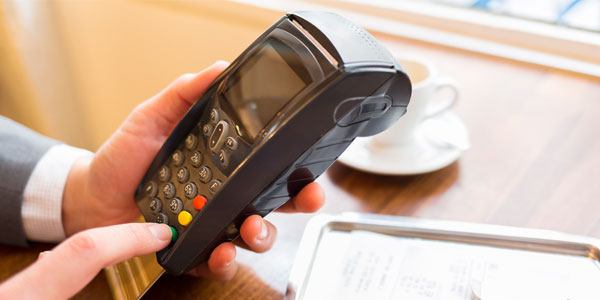
Here in the U.S., card fraud is rampant. In fact, according to arecent Barclay's report published in Security Magazine, 47% of theworld's credit card fraud happens in the U.S., even thoughAmericans account for just 24% of total credit card volumeworldwide.
|While technologies such as EMV and tokenization will eventuallyplay a key role in curtailing U.S. card fraud, experts agree thattheir best weapon against this threat is an informed consumer.
|“In life, information is powerful,” said Bill Freer, riskmanager for CO-OP Financial Services. “Nowhere is this betterillustrated than in the fight against card fraud. Teaching membersproper security protocols should be a top priority for every creditunion, especially with so many misperceptions out there about howfraud occurs.”
|Myth #1: I'm Safer Onsite Than Online
|According to Freer, the number one misperception most consumershave about card fraud is that online transactions pose the greatestrisk.
|“Online fraud is always a concern, but most of the fraud we seeoccurs because of skimming devices and malware at merchant sitesand ATMs,” he said. “These tools allow fraudsters to record all thecard data information they need often without ever touching aphysical card.”
|Myth #2: I Know Exactly Where My Card WasStolen
|Another common misperception is that the last transaction madebefore fraud is detected is the source of the compromise.
|“This is not usually the case,” Freer said. “Most of the time,card information is stolen weeks or even months before fraudsurfaces. This is because the data is frequently posted on illegalwebsites and sits out there on the Internet until a fraudsterdecides to purchase it.”
|Myth #3: PIN Transactions Create Less Risk ThanSignature Transactions
|This is not necessarily true, Freer said. “During a debittransaction, it puts less card info at risk for compromise whensigning for a purchase rather than to enter a PIN,” he said. “Inaddition, if a PIN is captured, it's even more valuable to afraudster, as it makes it that much easier to turn that card datainto cash. It can be devastating to have a checking accountdrained, and having access to the cardholder's PIN makes it mucheasier for a fraudster to do just that.”
|Myth #4: There's No Way to Stop FraudMyself
|While credit unions and their service providers work diligentlyto prevent fraud, Freer noted that their efforts are moresuccessful when cardholders contribute to fraud monitoring efforts.He encouraged credit unions to make new, advanced technologies forcard controls and alerts available to members.
|“With these tools, members can determine exactly when, where andhow their cards can be used, and they can block unauthorizedtransactions themselves,” he said. “This practice alone can savecredit unions and their members immeasurably in terms of time,money and aggravation.”
|Myth #5: I Should Avoid Digital Wallets
|EMV chip cards are a must, according to Freer, but he alsoemphasized the benefits of new tokenized payment options.
|“Many consumers are not aware that tokenized digital walletssuch as Apple Pay are highly secure,” he said. “In a tokenizedtransaction, digital tokens replace card data throughout thetransaction, which means actual magnetic stripe data from a cardnever changes hands. As a rule of thumb, the less information thatis transferred during a transaction, the less risky thetransaction.”
|He continued, “To educate members about fraud, take advantage ofall your communication tools. Post security reminders on ATMscreens that catch the eye. Use the information banner on yourwebsite to promote your card controls and alerts solution. Letmembers know about your fraud detection services, and advise themto respond immediately whenever they are contacted by a fraudanalyst. Ultimately, detecting card fraud is an inexact sciencethat is much more precise when cardholders participate in theprocess.”
|Do more to protect your credit union and members by readingCO-OP'sSecurity eBook.
Complete your profile to continue reading and get FREE access to CUTimes.com, part of your ALM digital membership.
Your access to unlimited CUTimes.com content isn’t changing.
Once you are an ALM digital member, you’ll receive:
- Critical CUTimes.com information including comprehensive product and service provider listings via the Marketplace Directory, CU Careers, resources from industry leaders, webcasts, and breaking news, analysis and more with our informative Newsletters.
- Exclusive discounts on ALM and CU Times events.
- Access to other award-winning ALM websites including Law.com and GlobeSt.com.
Already have an account? Sign In
© 2024 ALM Global, LLC, All Rights Reserved. Request academic re-use from www.copyright.com. All other uses, submit a request to [email protected]. For more information visit Asset & Logo Licensing.









